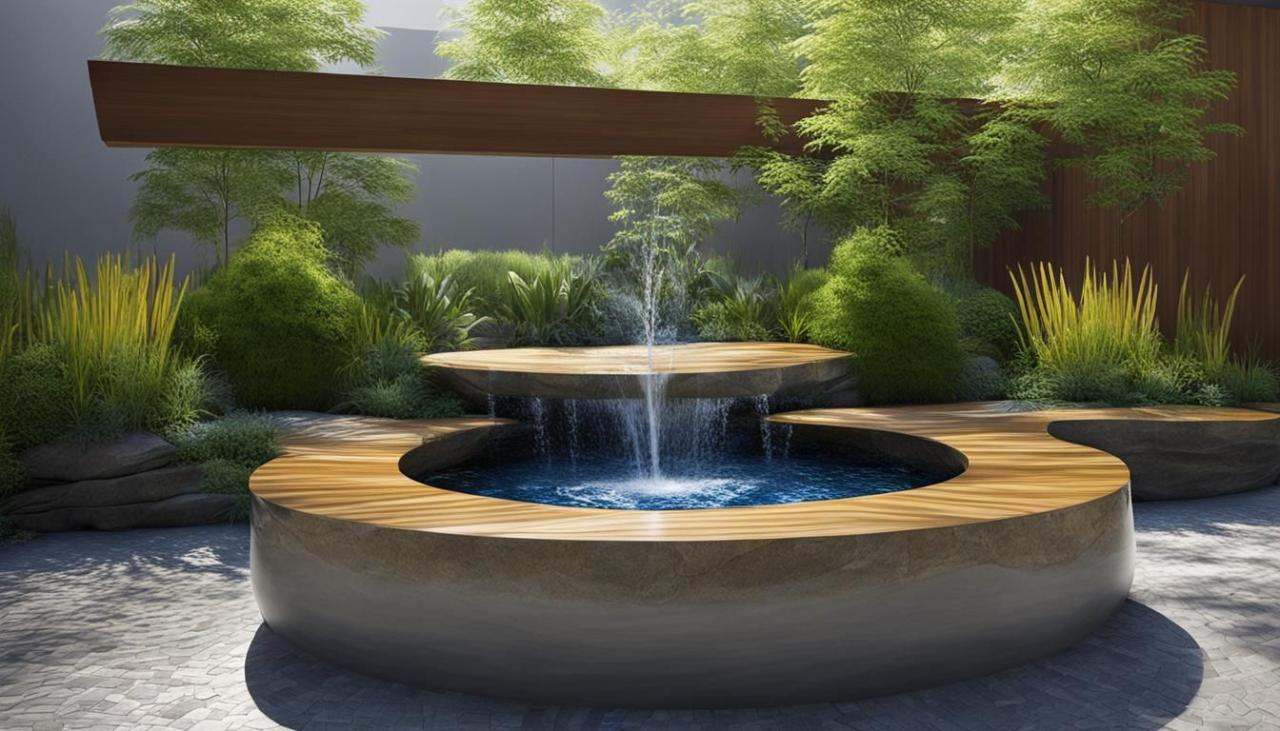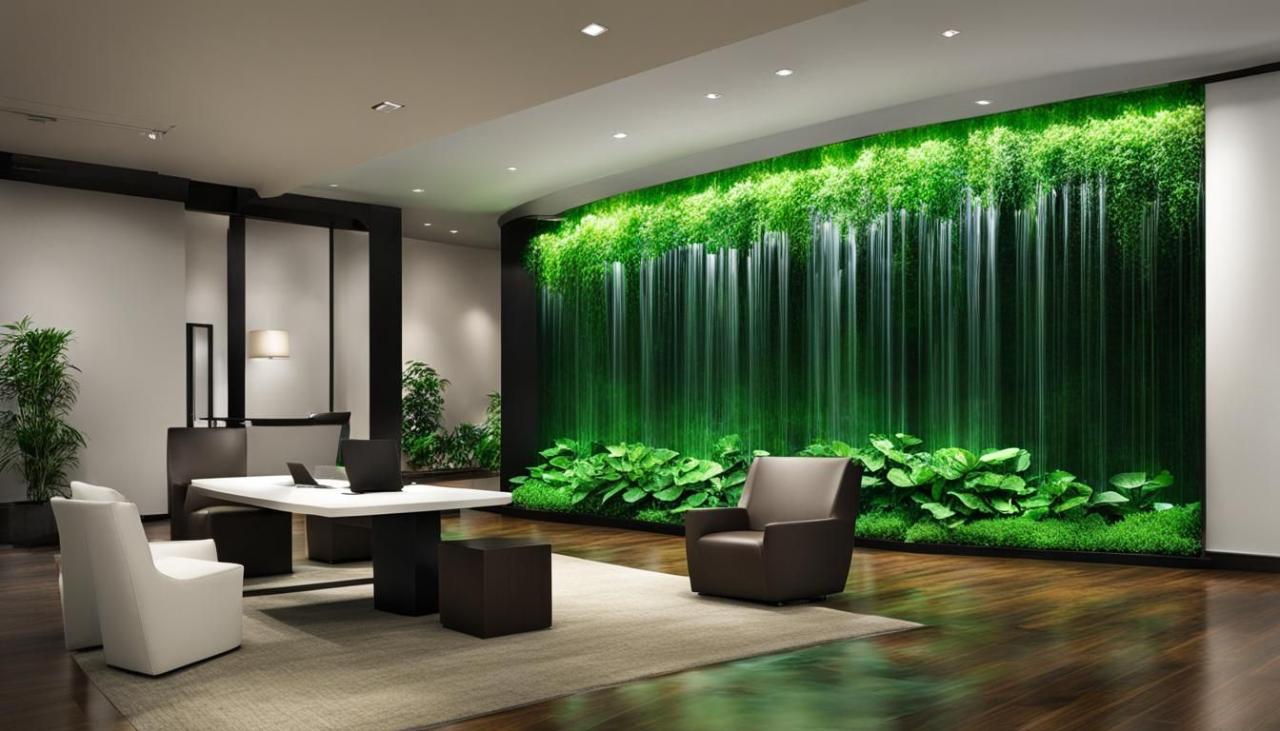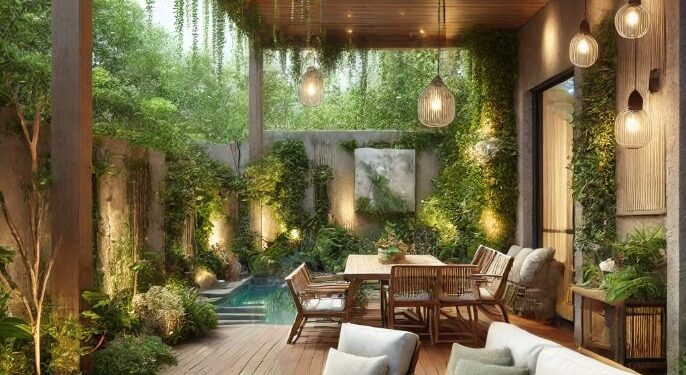In today’s fast-paced and increasingly urbanized world, people crave a stronger connection with nature. Biophilic design has emerged as a powerful concept that bridges the gap between modern living and the natural environment. It not only transforms indoor areas but also enhances outdoor spaces, creating environments that promote well-being, relaxation, and a deep sense of harmony with nature.
Biophilic design focuses on integrating natural elements into our living spaces to foster a connection with the outdoors. This design philosophy uses natural materials, colors, patterns, and organic forms to make environments feel alive, refreshing, and comforting. While it has been widely applied indoors, incorporating biophilic principles into outdoor spaces elevates their functionality and aesthetic appeal, making them more inviting and beneficial for physical and mental health.
The Importance of Biophilic Design in Outdoor Living
Outdoor living spaces have become essential extensions of the home. Patios, gardens, balconies, and terraces are no longer just additional areas; they have transformed into vital spots for social gatherings, relaxation, dining, and even remote work. By infusing biophilic design into these areas, you create spaces that connect you to nature while providing comfort and style.
A. Health and Wellness Benefits
Spending time in nature has been scientifically proven to reduce stress, lower blood pressure, and improve mood. Biophilic outdoor design allows you to reap these benefits without leaving home. By adding greenery, natural textures, and water features, you can foster tranquility and mental clarity.
B. Enhanced Aesthetic Appeal
Natural elements bring timeless beauty and sophistication. Using materials like wood, stone, and bamboo, along with earthy color palettes, creates a cohesive and visually appealing outdoor environment. These natural aesthetics never go out of style and blend seamlessly with various architectural themes.
C. Improved Functionality
Biophilic design is not just about looks; it enhances how outdoor spaces are used. Strategic placement of plants can provide shade and privacy. Natural canopies, pergolas covered with vines, or green walls can delineate spaces while offering shelter and intimacy.
D. Boosted Property Value
Homes with well-designed outdoor spaces inspired by biophilic principles are more attractive to potential buyers. A beautifully landscaped garden or a nature-infused patio can significantly increase a property’s market value, making it a wise investment.
Key Elements of Biophilic Outdoor Design
Incorporating biophilic design into your outdoor space requires thoughtful planning. Here are essential elements to consider:
A. Native Plant Landscaping
Choosing native plants is crucial for sustainability and easy maintenance. Native species are adapted to the local climate and ecosystem, requiring less water and care. Incorporate a variety of textures, colors, and heights to mimic natural landscapes.
B. Water Features
Water has a calming and restorative effect. Adding fountains, ponds, or small streams can create soothing sounds and visual interest. The presence of water also attracts birds and butterflies, enhancing biodiversity.
C. Natural Materials
Use materials such as reclaimed wood, natural stone, and clay for furniture, flooring, and decorative accents. These elements ground the design in nature and evoke an organic, rustic charm.
D. Organic Shapes and Patterns
Incorporate curved lines, irregular shapes, and fractal patterns inspired by nature. Avoid rigid geometric forms to foster a softer, more inviting atmosphere.
E. Green Walls and Vertical Gardens
Maximize greenery by adding vertical gardens or living walls. These features are perfect for small outdoor spaces and create a lush, immersive environment without taking up much floor space.
F. Natural Light and Shadow Play
Design outdoor areas to make the most of natural sunlight. Use pergolas, lattice structures, or trees to create dynamic shadows that change throughout the day, adding depth and visual interest.
Tips for Applying Biophilic Design at Home
Implementing biophilic principles doesn’t require a complete renovation. Here are practical tips for homeowners looking to enhance their outdoor areas:
A. Start Small with Potted Plants
If you’re new to gardening, begin by adding potted plants with varying heights and textures. Group them in clusters to mimic natural plant groupings.
B. Create a Sensory Garden
Engage all senses by including plants with fragrant flowers, textured leaves, and herbs you can touch, smell, and taste. Add wind chimes or water features for auditory stimulation.
C. Add Comfortable Seating with Natural Fabrics
Choose outdoor furniture made from natural materials like rattan or teak. Use cushions and throws in earthy tones and textures to create a cozy, nature-inspired seating area.
D. Incorporate Pathways and Natural Walkways
Design pathways with gravel, stepping stones, or wood slices to invite exploration and movement through the garden. Curved paths feel more organic than straight lines.
E. Use Lighting to Highlight Natural Features
Install soft, warm lighting to illuminate plants, trees, and water features at night. Avoid harsh, artificial lighting that disrupts the natural ambiance.
F. Embrace Seasonal Changes
Select plants that offer interest throughout different seasons. This approach keeps your outdoor space dynamic and evolving, fostering a deeper connection with the natural cycles.
Popular Trends in Biophilic Outdoor Design

Biophilic design continues to evolve as homeowners and designers seek innovative ways to bring nature into their living spaces. Here are some current trends:
A. Edible Gardens and Urban Farming
Growing your own fruits, vegetables, and herbs not only provides fresh produce but also strengthens your relationship with nature. Edible gardens can be incorporated into outdoor kitchens or patio spaces.
B. Wildlife-Friendly Features
Installing birdhouses, butterfly gardens, and bee hotels supports local biodiversity and turns your outdoor area into a thriving ecosystem.
C. Multifunctional Outdoor Spaces
Designing spaces that serve multiple purposes—such as combining a lounge area with a garden or an outdoor workspace with a green backdrop—maximizes functionality without sacrificing natural beauty.
D. Natural Pools and Ponds
Replacing traditional swimming pools with natural swimming ponds adds ecological value and aesthetic appeal. These pools use plants and natural filtration systems instead of chemicals.
E. Biophilic Pergolas and Shade Structures
Pergolas with climbing plants or retractable green canopies create shaded retreats that blend seamlessly with the natural surroundings.
Challenges and Solutions in Biophilic Outdoor Design
While the benefits of biophilic design are clear, some challenges may arise during implementation:
A. Maintenance Requirements
Natural landscapes require care. To minimize upkeep, choose low-maintenance native plants and install irrigation systems. Opt for drought-tolerant species to reduce watering needs.
B. Budget Constraints
Incorporating natural materials can be costly. Start with small elements like potted plants or DIY vertical gardens before investing in larger structures.
C. Limited Space
Even in small balconies or patios, vertical gardening, hanging plants, and compact water features can achieve a biophilic effect without taking up much room.
D. Urban Restrictions
Some urban settings have regulations on landscaping or building modifications. Research local guidelines and seek creative solutions, such as container gardens or modular green walls.
Why Biophilic Outdoor Design Matters Now More Than Ever

As people spend more time at home, outdoor spaces play a crucial role in maintaining mental and physical health. The pandemic underscored the importance of having access to nature, even within urban environments. Biophilic outdoor design creates restorative spaces that support well-being, offering a sanctuary from digital overload and environmental stressors.
By embracing biophilic design, you not only improve your immediate surroundings but also contribute to larger environmental goals. Supporting local ecosystems, reducing carbon footprints with sustainable materials, and fostering biodiversity are all aligned with the principles of this approach.
Biophilic design is more than a trend; it’s a philosophy that acknowledges our innate need to connect with nature. By thoughtfully integrating natural elements into outdoor spaces, you create environments that nourish the soul, enhance well-being, and offer lasting aesthetic value.
Whether you have a sprawling backyard or a compact balcony, biophilic principles can be adapted to fit your space and lifestyle. From lush vertical gardens to calming water features, every addition brings you closer to nature’s healing power. Embrace biophilic design today to elevate your outdoor living experience and foster a deeper connection with the natural world.










